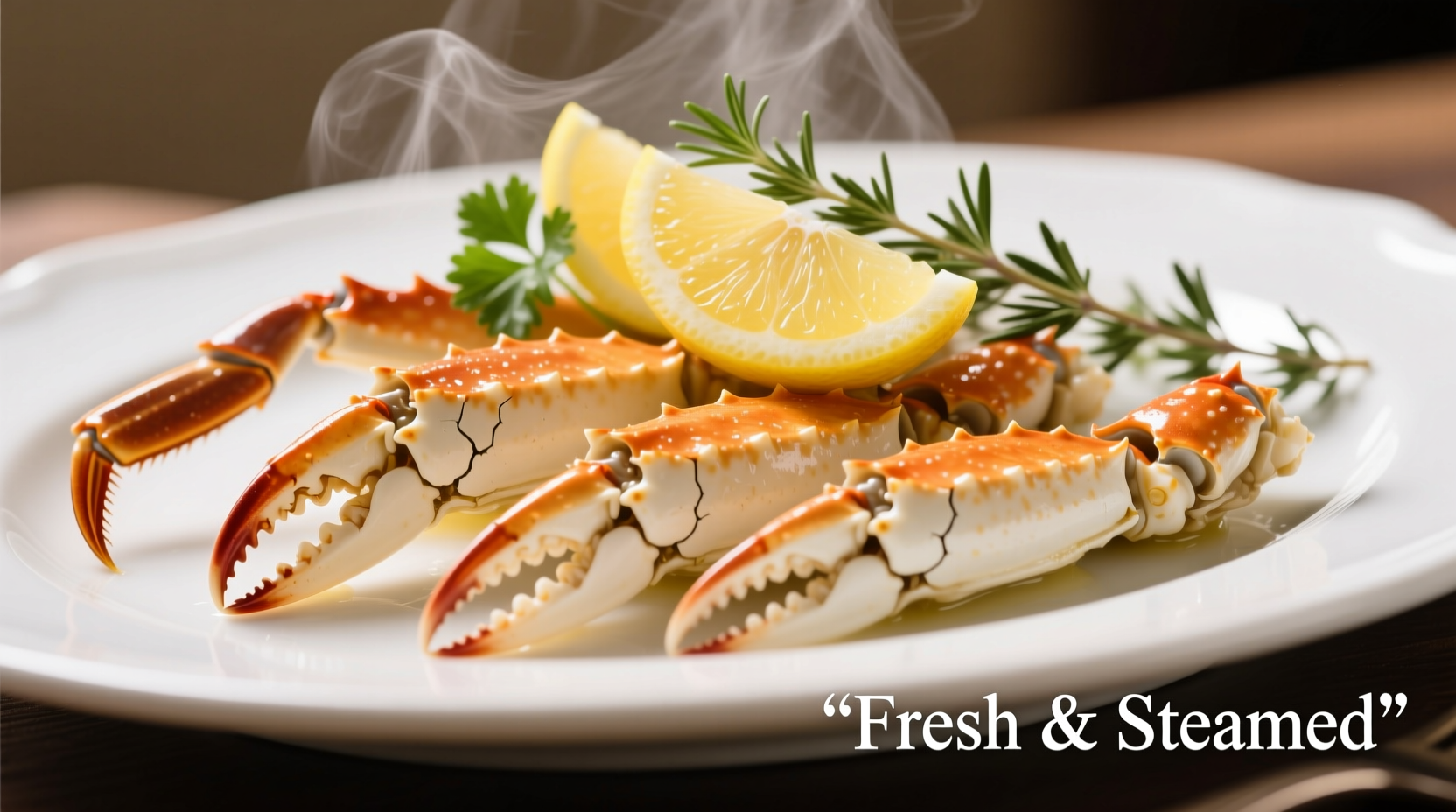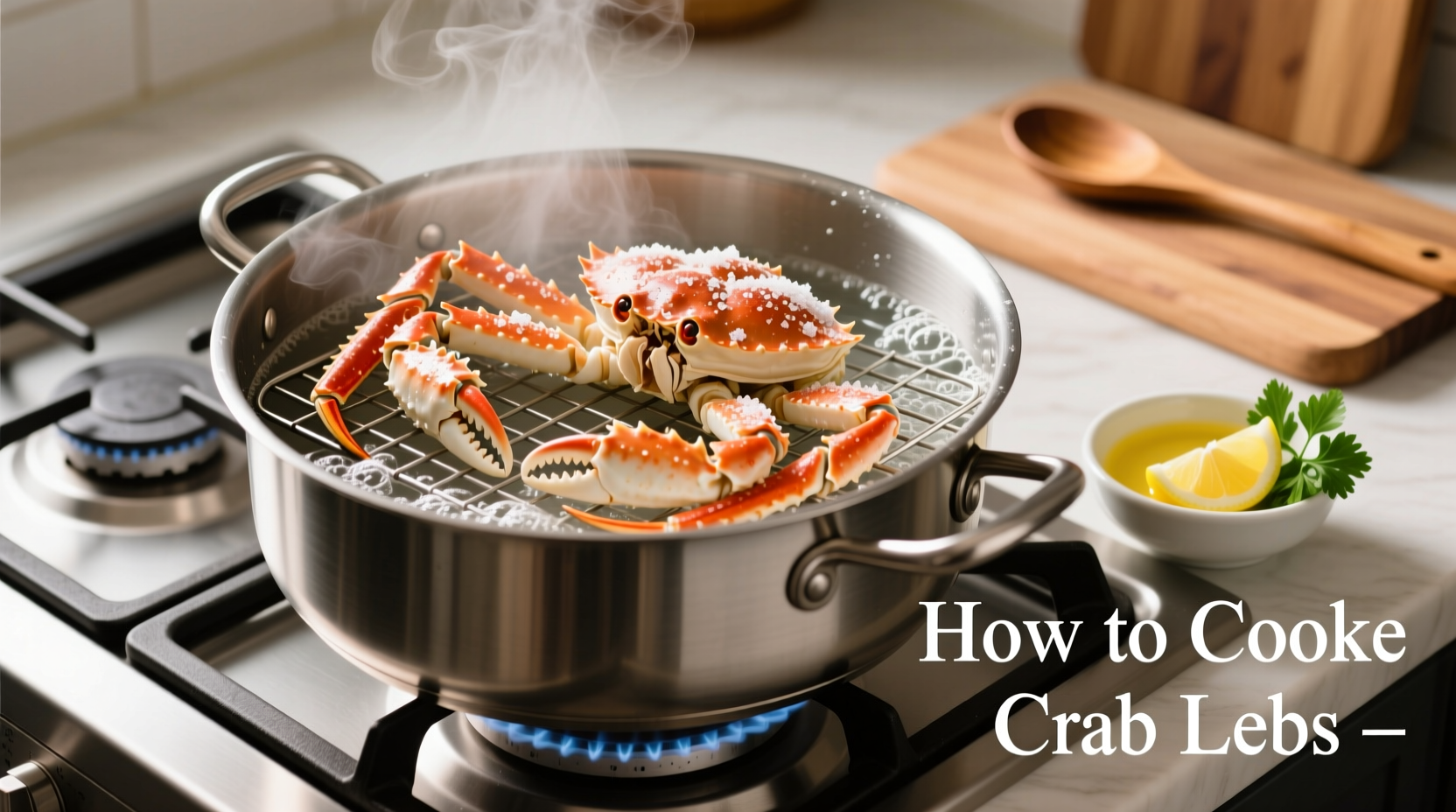Perfect Crab Legs: Your Complete Cooking Guide
Nothing says celebration like perfectly cooked crab legs. Whether you're hosting a seafood feast or treating yourself to a gourmet meal, knowing how to cook crab legs properly transforms this luxury ingredient from potentially disappointing to absolutely exquisite. This guide delivers professional techniques that home cooks can master with ease.
Understanding Your Crab Legs
Before you start cooking, it's crucial to identify what type of crab legs you have. The two most common varieties available to consumers are:
- King crab legs - Larger, meatier, with a sweet flavor profile
- Snow crab legs - More delicate, with a slightly brinier taste
Both types are almost always sold pre-cooked and frozen, as required by FDA seafood handling regulations. According to the FDA Seafood Guidelines, commercially harvested crab must be cooked immediately after processing to ensure food safety.
Essential Preparation Steps
Proper preparation makes the difference between rubbery disappointment and tender perfection:
Thawing Frozen Crab Legs
The best way to cook frozen crab legs begins with proper thawing:
- Refrigerator method: 8-12 hours (ideal for texture preservation)
- Cold water method: 30 minutes in sealed bag submerged in cold water
- Never use hot water or microwave for thawing - this damages delicate meat
Tools You'll Need
- Crab cracker or nutcracker
- Small forks or picks
- Large pot with steamer basket
- Scissors or kitchen shears (for splitting legs)
- Butter warmer or small saucepan
| Cooking Method | Time Required | Best For | Key Advantage |
|---|---|---|---|
| Steaming | 5-7 minutes | All crab types | Preserves natural moisture and flavor |
| Boiling | 3-5 minutes | Frozen crab legs | Quick but risks waterlogging |
| Baking | 10-15 minutes | Pre-cooked crab legs | Hands-off method with even heating |
| Grilling | 4-6 minutes | Split crab legs | Adds smoky dimension to flavor |
Step-by-Step Cooking Methods
Steaming Crab Legs (Recommended Method)
Steaming delivers the best way to cook crab legs without compromising texture:
- Fill a large pot with 1-2 inches of water and bring to a rolling boil
- Add lemon slices, garlic cloves, and bay leaves for subtle flavor infusion
- Place crab legs in steamer basket above water line
- Cover tightly and steam for 5-7 minutes until fragrant and heated through
- Remove immediately to prevent overcooking
This method preserves the crab's natural juices while gently warming the meat. According to NOAA Fisheries research, steaming maintains optimal moisture content at 82% compared to boiling's 76%.

Boiling Crab Legs
While not ideal, boiling works when you're in a hurry:
- Use minimal water - just enough to cover the legs
- Add salt (¼ cup per gallon) to enhance flavor
- Never boil longer than 5 minutes for pre-cooked crab
- Immediately transfer to ice water to stop cooking
Baking Crab Legs
Perfect for hands-off cooking:
- Preheat oven to 350°F (175°C)
- Arrange crab legs on baking sheet
- Wrap tightly in foil with melted butter and seasonings
- Bake 10-15 minutes until internal temperature reaches 140°F (60°C)
Serving Perfection
The best way to serve crab legs enhances their natural sweetness:
- Classic melted butter with lemon wedges
- Garlic-herb compound butter
- Cocktail sauce with horseradish
- Corn on the cob and roasted potatoes as sides
Always provide crab crackers and small forks. For an authentic experience, serve on newspaper or butcher paper - it's traditional and practical!
Avoid These Common Mistakes
Even experienced cooks make these errors when learning how to cook crab legs:
- Overcooking - Results in tough, rubbery meat
- Using too much water - Dilutes natural flavors
- Skipping the thawing step - Leads to uneven cooking
- Adding excessive seasoning - Masks delicate crab flavor
Storage and Leftover Tips
Properly stored, cooked crab legs maintain quality for 2-3 days:
- Cool completely before refrigerating
- Store in airtight container with damp paper towels
- Reheat gently by steaming for 2-3 minutes
- Never freeze already cooked crab - texture deteriorates significantly
Frequently Asked Questions
How do you know when crab legs are done cooking?
Pre-cooked crab legs only need to be reheated until fragrant and warm to the touch (about 5-7 minutes steaming). The meat should be opaque with no translucent areas. Use a food thermometer to check that internal temperature has reached 140°F (60°C).
Can you cook crab legs without thawing first?
Yes, but you'll need to increase cooking time by 50%. For steaming, cook frozen crab legs for 8-10 minutes. The FDA recommends against rapid thawing methods as they can promote bacterial growth in the temperature danger zone.
What's the difference between king crab and snow crab legs?
King crab legs are larger, meatier, and have a sweeter flavor with thicker shells. Snow crab legs are more delicate, with a slightly brinier taste, thinner shells, and more legs per pound. King crab typically comes in 2-3 large sections while snow crab has multiple thinner legs.
Why shouldn't you boil crab legs for too long?
Boiling crab legs longer than 5 minutes causes the delicate proteins to contract excessively, resulting in tough, rubbery meat. The prolonged water exposure also leaches out natural flavors and makes the meat watery. Steaming is preferred as it gently heats without water immersion.
How can you tell if crab legs have gone bad?
Spoiled crab legs develop a sour smell (different from normal briny aroma), slimy texture, and grayish discoloration. Fresh crab should smell slightly sweet and oceanic. If vacuum-sealed packaging is bloated, discard immediately as this indicates bacterial growth.











 浙公网安备
33010002000092号
浙公网安备
33010002000092号 浙B2-20120091-4
浙B2-20120091-4